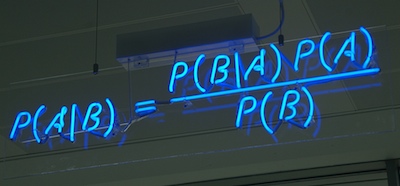News of the week
/The summer is, unbelievably, drawing in. While you've been gadding about in the sunshine, we've been scouring the geoscience and technology news — just for you! Here are some things that caught our eye in August.
Spectral stuff from ffA
If you're a regular reader, you know we'll always cover a story about seismic frequency and resolution. A week ago, purveyors of high-tech seismic attributes ffA introduced HD Frequency Decomposition, or HDFD. As you might guess, HD stands for high definition, though it's not clear what that means in the context of seismic attributes. As is fairly normal with resolution-enhancing technology, the claims are eyebrow-raisingly bold:
...[we can] step beyond the resolution limitations of conventional frequency decomposition techniques.
Steve Purves, Technical Director, ffA
You can read about the technique in the nicely illustrated datasheet, but don't expect to find out how it works. I was disappointed to see that it doesn't even mention the type of decomposition; we assume it's some sort of scale-based approach (that is based on a wavelet, not Fourier, transform). Quiz them yourself at SEG next month in Booth C-1644.
By the way, if you're going to SEG and have a smart phone, think about keeping up with the buzz by following some chatterboxes on Twitter—@SEGAnnualMtg, @ParadigmLtd, @ESG_Solutions, @kwinkunks, and @EvanBianco. You can create and account and just follow the conversation, but it's more fun to join in!
More microseismic power for Canada
A good friend of Agile's recently went to work at Spectraseis, a seismic processing firm specializing in microseismic and reservoir monitoring in general. They just opened a Calgary office, so good luck to them in what is a pretty tight market (there must be 50 seismic processing shops in Calgary). The company also announced $3.6M of investment from Credit Suisse, so they are clearly on a roll.
Next gen knowledge management
 Repsol, the Spanish oil company and supercomputing powerhouse, is rolling out some new knowledge sharing technology from Autonomy, a fast-growing UK company. There are two pieces: IDOL, an enterprise search engine, and Virage, a rich media management system.
Repsol, the Spanish oil company and supercomputing powerhouse, is rolling out some new knowledge sharing technology from Autonomy, a fast-growing UK company. There are two pieces: IDOL, an enterprise search engine, and Virage, a rich media management system.
Autonomy is an awesome company. How do we know this? They have Bayes' Theorem up in neon lights. Yeah, Bayes' Theorem.
Get geo-referenced maps faster
Elsevier is one of the giants of 'old school' publishing, but also one of the more innovative ones (have you seen their graphical abstracts?). They have just introduced an awesome-looking search site for exploration geoscientists, called Geofacets. It's a set of power tools for finding maps and figures, already georeferenced and ready for a GIS. It even includes IHS's global basins map to search more geologically, and includes what you need to know about rights and permissions. If your company has ScienceDirect access, which they probably do, then you should have immediate access.
Previous news posts from Agile*
HD Frequency Decomposition is a trademark of ffA, IDOL and Virage are trademarks of Autonomy, Geofacets is a trademark of Elesevier. Bayes' Theorem image is CC-BY-SA licensed by its creator mattbuck. This regular news feature is for information only. We aren't connected with any of these organizations, and don't necessarily endorse their products or services.








 Except where noted, this content is licensed
Except where noted, this content is licensed